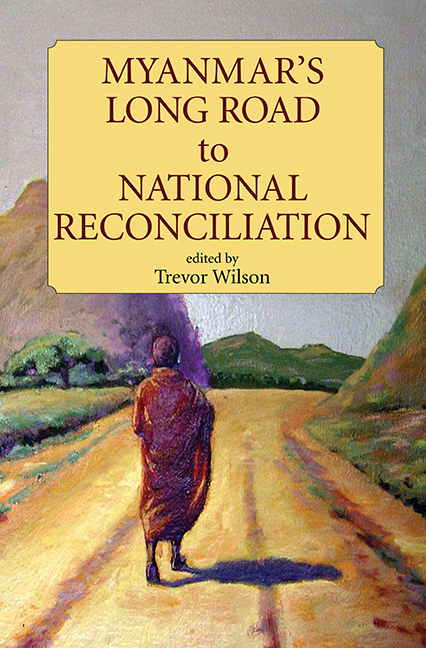Book contents
- Frontmatter
- Contents
- Acknowledgements
- The Contributors
- Glossary
- Overview
- I Perspectives on Recent Political Developments
- II Perspectives on the Economy and on Agricultural Development
- 4 Burma's Economy 2004: Crisis Masking Stagnation
- 5 The Status of the Agricultural Sector in Myanmar in 2004
- 6 Sustainable Agricultural and Rural Development: Pathways to Improving Social, Economic and Environmental Conditions in Myanmar
- 7 The Agricultural Sector and the Role of International Assistance in Promoting Agricultural Reform in Myanmar
- III Perspectives on National Reconciliation and Civil Society Development
- IV Charting the Way Ahead
- Index
6 - Sustainable Agricultural and Rural Development: Pathways to Improving Social, Economic and Environmental Conditions in Myanmar
from II - Perspectives on the Economy and on Agricultural Development
Published online by Cambridge University Press: 21 October 2015
- Frontmatter
- Contents
- Acknowledgements
- The Contributors
- Glossary
- Overview
- I Perspectives on Recent Political Developments
- II Perspectives on the Economy and on Agricultural Development
- 4 Burma's Economy 2004: Crisis Masking Stagnation
- 5 The Status of the Agricultural Sector in Myanmar in 2004
- 6 Sustainable Agricultural and Rural Development: Pathways to Improving Social, Economic and Environmental Conditions in Myanmar
- 7 The Agricultural Sector and the Role of International Assistance in Promoting Agricultural Reform in Myanmar
- III Perspectives on National Reconciliation and Civil Society Development
- IV Charting the Way Ahead
- Index
Summary
“Anything can wait but not agriculture”
— Pandit J. L. Nehru“Do not underestimate their [farmers'] knowledge and skill. Most of them are not lazy. They know the economic side of crop selection and operation. There are only a few points which they need advice from experts”
— U Ba Tin (1980)Introduction
Sustainable agricultural and rural development are the foundation for developing agro-based industries, and are positive pathways for solving many of Myanmar's current issues and challenges related to rural poverty, unemployment, human development, and associated malnutrition and rural urban drift.
In a recent Human Development Report (HDR) of the United Nations Development Program (UNDP) Myanmar ranked 131st out of 175 countries in terms of the Human Development Index (HDI). The HDI is the average value of three other indices: Life Expectancy Index (LEI), Education Index (EI,) and GDP (gross domestic product) Index (GDPI). Myanmar's LEI, EI and GDPI indices are 0.53, 0.72 and 0.39 respectively, resulting in HDI of 0.549. By comparison the HDI for Australia was 0.939 and for Luxembourg 1.0.
Based on GDP Index alone, Myanmar falls into the “least developed countries” category but on the Education Index measurement, it falls into the “developing countries” category. The final HDI for Myanmar sits between Low Human Development (0.440) and Medium Human Development (0.684) category.
The economic growth of a country not only improves human development; it also creates opportunities for widening people's choices. For an agricultural country like Myanmar, development strategy will obviously have to focus on agriculture. Agricultural development and a rise in agricultural productivity can be achieved through agricultural education, research, and extension, but above all, funding and investment from local and international sources are needed.
About 75 per cent of the total population resides in rural areas and is principally engaged in the agriculture, livestock, and fishery sectors for their livelihood. In order, therefore, to improve the HDI for Myanmar, improvements in the rural HDI, which reflect rural health, rural education, and rural economy, will be required.
- Type
- Chapter
- Information
- Myanmar's Long Road to National Reconciliation , pp. 105 - 126Publisher: ISEAS–Yusof Ishak InstitutePrint publication year: 2006



